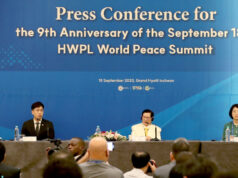Adnan Aamir
The federal government unveiled the budget for the fiscal year 2019-20 earlier this month. The total value of the budget stands at Rs8.24 trillion, with a deficit of Rs3.15 trillion. This budget was criticised by many people for being IMF-driven due to its additional taxes and cut in development expenses and subsidies. However, what did not get attention was that the PTI government ignored some of the most pressing development needs of Balochistan in this budget.
The first is the issue of highways in Balochistan. The single-lane narrow highways in the province are a constant source of deaths in accidents. Almost every week a deadly accident takes place on the highways of Balochistan due to the narrowness of the road. The gravity of the situation can be gauged from the fact that in the last decade, more people died in highway accidents than in terrorist attacks.
Although all highways of Balochistan are dangerously narrow, it is the 813-kilometer-long Quetta-Karachi highway which is the stage for most accidents. Known as RCD Highway, this road is used by more than 8,000 vehicles every day. However, given its narrow width, deadly collisions take place frequently.
In the last few months, the issue of highway accidents was actively raised and highlighted on social media. People criticised the provincial and federal governments for not doing enough to save lives of passengers on highways. Since national highways are a federal subject, the Balochistan government could not do anything to upgrade this road. The provincial government asked the federal government to allocate funds for the dualisation of the RCD highway in the 2019-20 budget. There were even claims that the federal government had agreed to finance the dualisation of Quetta-Karachi highway.
In the last few months, the issue of highway accidents was actively raised and highlighted on social media. People criticised the provincial and federal governments for not doing enough to save lives of passengers on highways
However, in the 2019-20 budget an insignificant amount of funds was allocated for this important project. The federal government earmarked Rs500 million to study feasibility of dualisation of the RCD Highway. It will take six years to complete the study.
Commentators believe that dualisation of the highway could have started next year with the feasibility study completed in a few months’ time if the federal government prioritised this issue, which is not the case.
Other highway projects in Balochistan were also ignored. Rs1 billion of the total Rs76 billion was allocated for dualisation of N-50 Highway. Rs500 million of Rs7 billion was allocated for dualisation of Quetta-Dhadar section of N-65. This means that no meaningful progress will be made in highway upgrades in Balochistan. Clearly, the provincial government failed to convince Islamabad to prioritise this issue.
Balochistan was also ignored in the funding for the China-Pakistan Economic Corridor (CPEC) projects. Gwadar is facing an acute drinking water crisis but only Rs400 million were allocated for a desalination plant. Rs1 billion of Rs13.2 billion was allocated for development of Gwadar city under a GDA project. Only Rs9.4 billion of Rs63 billion were allocated for Zhob-Kuchlak road, which was inaugurated with much fanfare by Prime Minister Imran Khan in March as the western route of CPEC. This again goes on to show that Balochistan will not benefit much from the infrastructure development projects under CPEC in 2019-20.
The federal government also did not allocate enough resources to address the socio-economic backwardness in Balochistan. Inflation of 11-13 percent is forecasted for the year 2019-20, as per the federal budget. With the highest poverty rate of 71 percent in the country, underprivileged sections of the society need an economic package to survive. However, this important need of the province was also overlooked by the federal government.
In order to compensate for this, provincial government has to use its own resources. It earmarked Rs1 billion for the establishment of a Social Protection and Poverty Alleviation Authority, which will be beneficial for marginalised people of the province.
There is also a provincial Public Sector Development Programme (PSDP) of Rs108 billion. If properly implemented, the PSDP can make reasonable contributions to the development needs of Balochistan. However, owing to financial and management constraints, the provincial government is never able to fully spend the development budget. For instance, he PSDP allocation was Rs88 billion last year and the government had to revise it to Rs42 billion despite the backwardness in the province. Therefore, it is not likely that the provincial government can fully spend Rs108 billion on development of the province in the upcoming fiscal year.
Economic needs of Balochistan, just like the rest of the country, require a bailout package from the federal government. Otherwise the socio-economic conditions of the people will further deteriorate. However, the federal government, after signing the agreement with the IMF, is doing the complete opposite. It increased taxes on the people and cut down subsidies. In such circumstances, it will be futile to pin hopes from the federal government to help improve the economic backwardness in Balochistan.
Originally published in The Friday Times
Share your comments!








